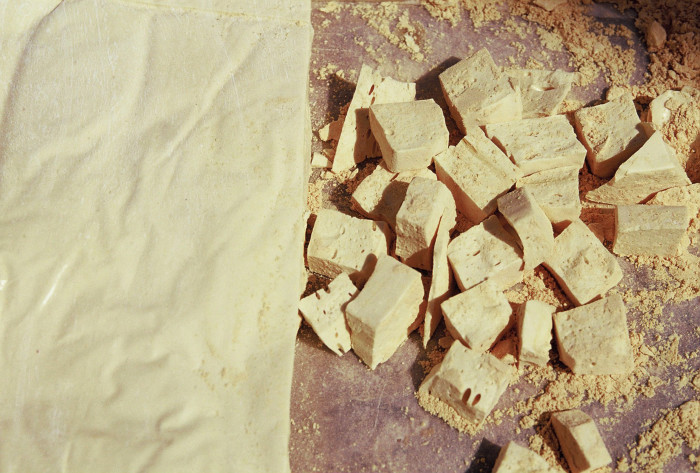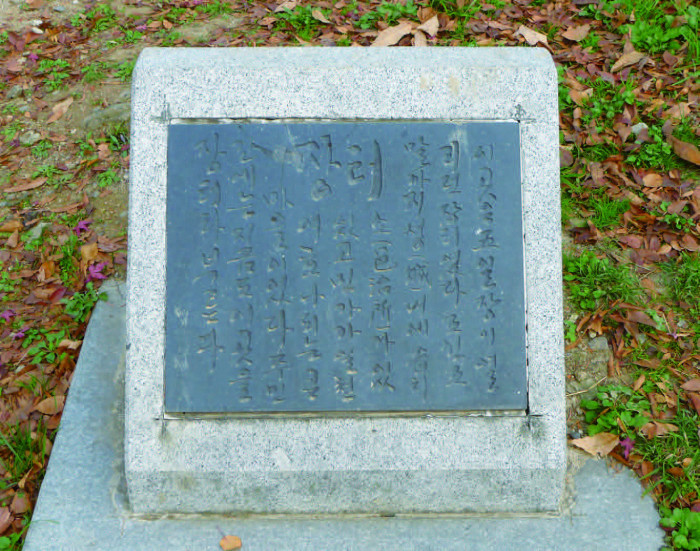GyeongGi Cultural Foundation
Commercial development and Marketplace
Economy of Namhansanseong
"Stories on the Road" is a story about a UNESCO World Heritage site and a story. It will tell you the life and spirit of our ancestors in the ancient road of The old Namhansanseong path. |
Land utilization

Namhansanseong Silhwangdo / Source: Jangseogak
“Land insufficient for self-sufficiency makes one to look towards commerce”
The Treatise On Geography in King Sejong's Reign records the scope of land utilization of Namhansanseong Fortress. The land in Joseon Dynasty typically used the unit of gyeol, which was a relative scale according to the output of the land, not an absolute scale based on measurements such as today’s meter method. The Treatise On Geography in King Sejong's Reign states that the size of the land within Namhansanseong Fortress was 124 gyeol. If this is converted into current units of grain, the total volume of grains produced in a year from the land that belonged to the fortress was 22 tons, which was actually an extremely inadequate amount. There was also a severe lack of land to cultivate crops within Namhansanseong Fortress, especially following the reign of King Injo, who promoted the citizen recruitment policy which resulted in more than 4,000 residents dwelling within the fortress. In other words, not enough land was available inside Namhansanseong Fortress as the palace, various government offices, and agencies as well as residences of the common people crowded the town, so it is safe to say that there was no land for farming. Thus, farmlands had to be set up outside the fortress, and when even this was not sufficient, food had to be supplied from surrounding regions. It is almost inevitable that Namhansanseong Fortress became the center of commerce and a city of consumption.
Marketplace

“Namhansanseong Seongnaejang, the center of trade in the south of Hangang”
Namhansanseong Fortress is a high ground, making it extremely difficult to transport goods for trade. Unlike the gates to the east and south, the north and west gates are also narrow and quite steep. But why is a marketplace located in such an uncomfortable area so famous? It was because of the special nature of Namhansanseong Fortress and the fact that it is a central area where the old Namhansanseong path (Bonghwaro) passed. Large marketplaces were set up wherever major roads made stopovers and a great population resided. Sanseongjang (Seongnaejang) was the third greatest market in the south of Hanyang following Songpajang and Suwoneupjang in the late Joseon period. If Suwoneupjang was an essential market on the Samnam-daero street, Seongnaejang was an important marketplace on Bonghwaro. Learning from the fact that there was a cattle market set up in Seongnaejang and that the market dealt in extremely unique transaction items that were not sold at Songpajang, it is highly likely that, though it was smaller than Songpajang, Seongnaejang was used as a market behind Songpajang. Also, as it was located in the military and administrative center where barracks and government offices were established, it could be estimated that its scale was comparable to that of Songpajang.
Crops and a list of items traded at marketplaces
Stone post of the marketplace
“People would buy snacks to eat back then?”
After the expansion and reconstruction of Namhansanseong Fortress by King Injo in 1626, the center of the town moved into the fortress and the population grew rapidly to around 4,000 people. Subsequently, the economy of Sanseong-ri rapidly changed from self-sufficiency to consumption. Depending on the conditions of farmlands, the types of crops cultivated close to the fortress were beans, vegetables, and other self-sufficient, small-scale farm products, and going farther away from the fortress where a vaster land could be secured for farming, there was more cultivation of commodity crops such as rice, barley, and tobacco. Also, if you look at the items traded at the marketplaces, you can find an interesting fact. Major trade items were rice, pears, salted fish, porcelain, chicks, calves, and tobacco, as well as yeot, a Korean hard taffy that could not be found anywhere else in Joseon at the time. Since yeot is only recorded as an item sold at Seongnaejang, you could guess that it was a unique specialty item of Seongnaejang. This also leads to the conclusion that the fortress and its surrounding area was definitely a consumer city.
<Copyright(c)2002 GGC All rights reserved.>
information
Stories on the Road
Published by/ Namhansanseong World Heritage Centre, Gyeonggi-do The Center for Gyeonggi Studies, Gyeonggi Cultural Foundation
Published on/ November 24, 2017
Supervised by/ Lee Ji-hoon, Director of the Center for Gyeonggi Studies, Gyeonggi Cultural Foundation
Planned and coordinated by/ Chae Chi-yong, Senior Researcher at the Center for Gyeonggi Studies, Gyeonggi Cultural Foundation Park Da-seul, Researcher at the Center for Gyeonggi Studies, Gyeonggi Cultural Foundation
keywords
- Writer
- GyeongGi Cultural Foundation
- About
- Everything about the GyeongGi arts and culture, GGCF
- homepage
- http://www.ggcf.kr